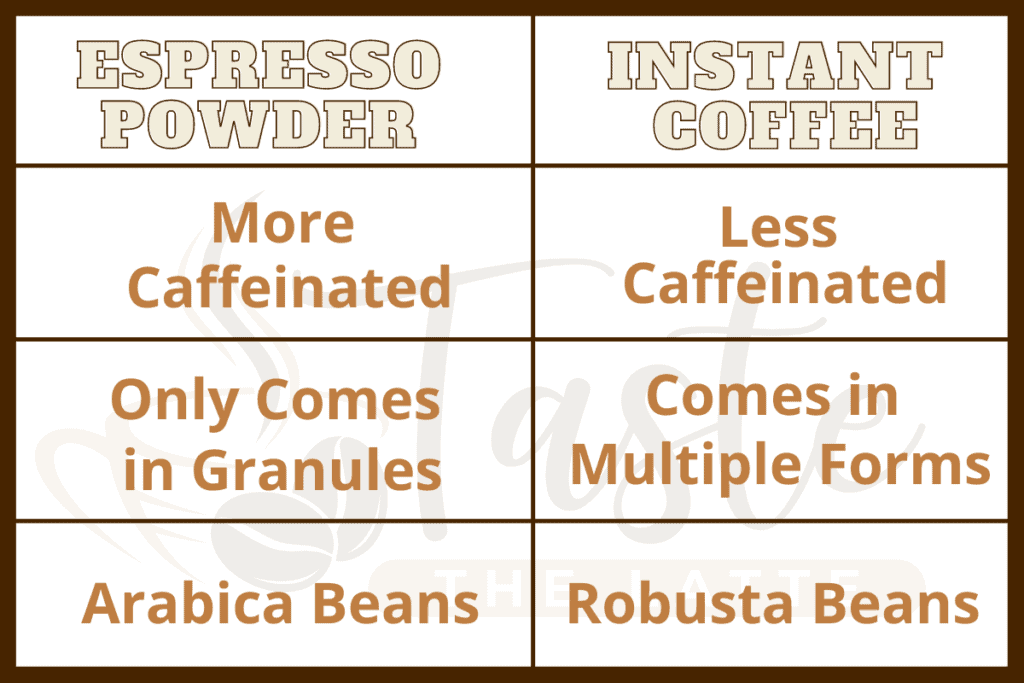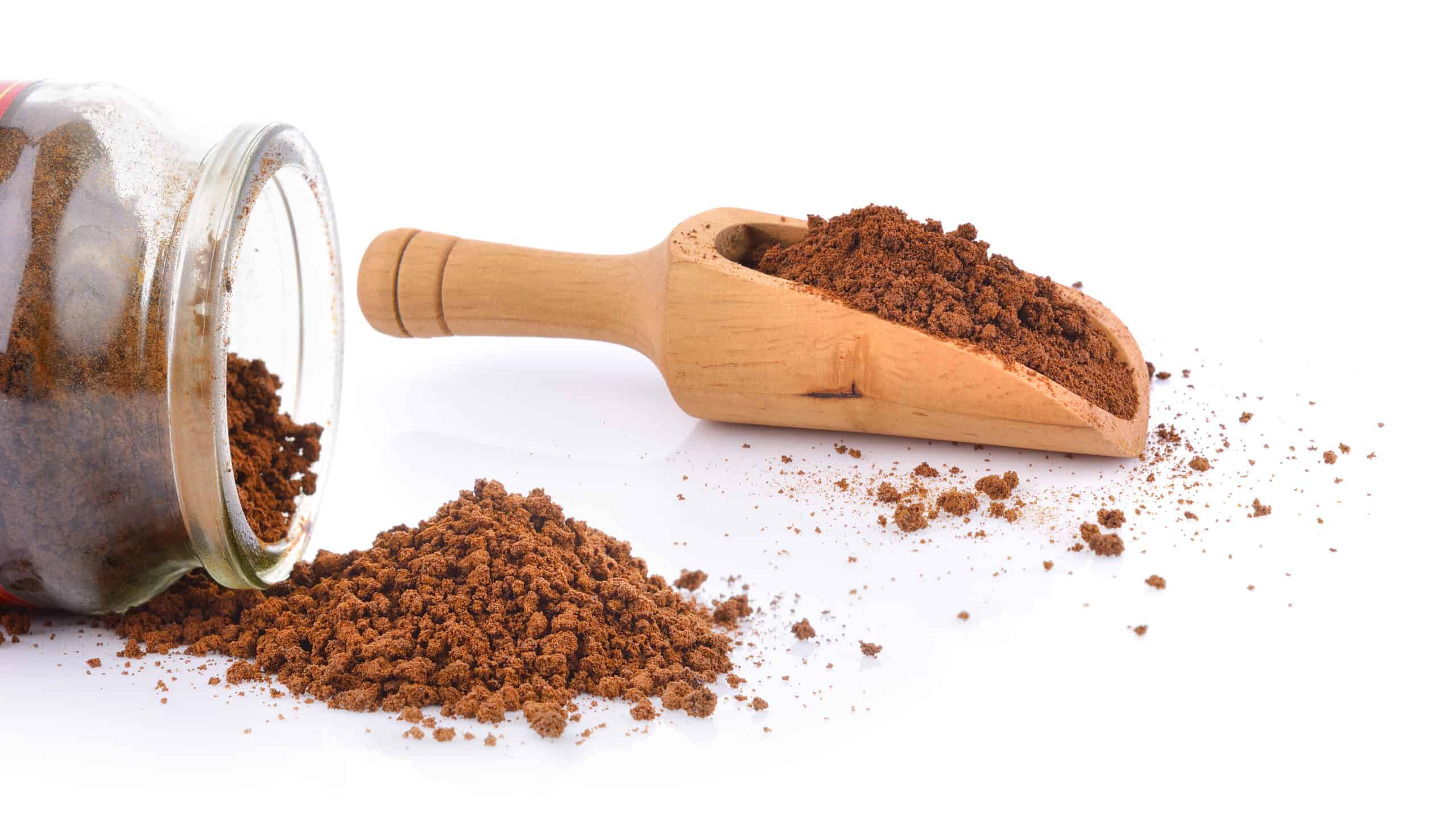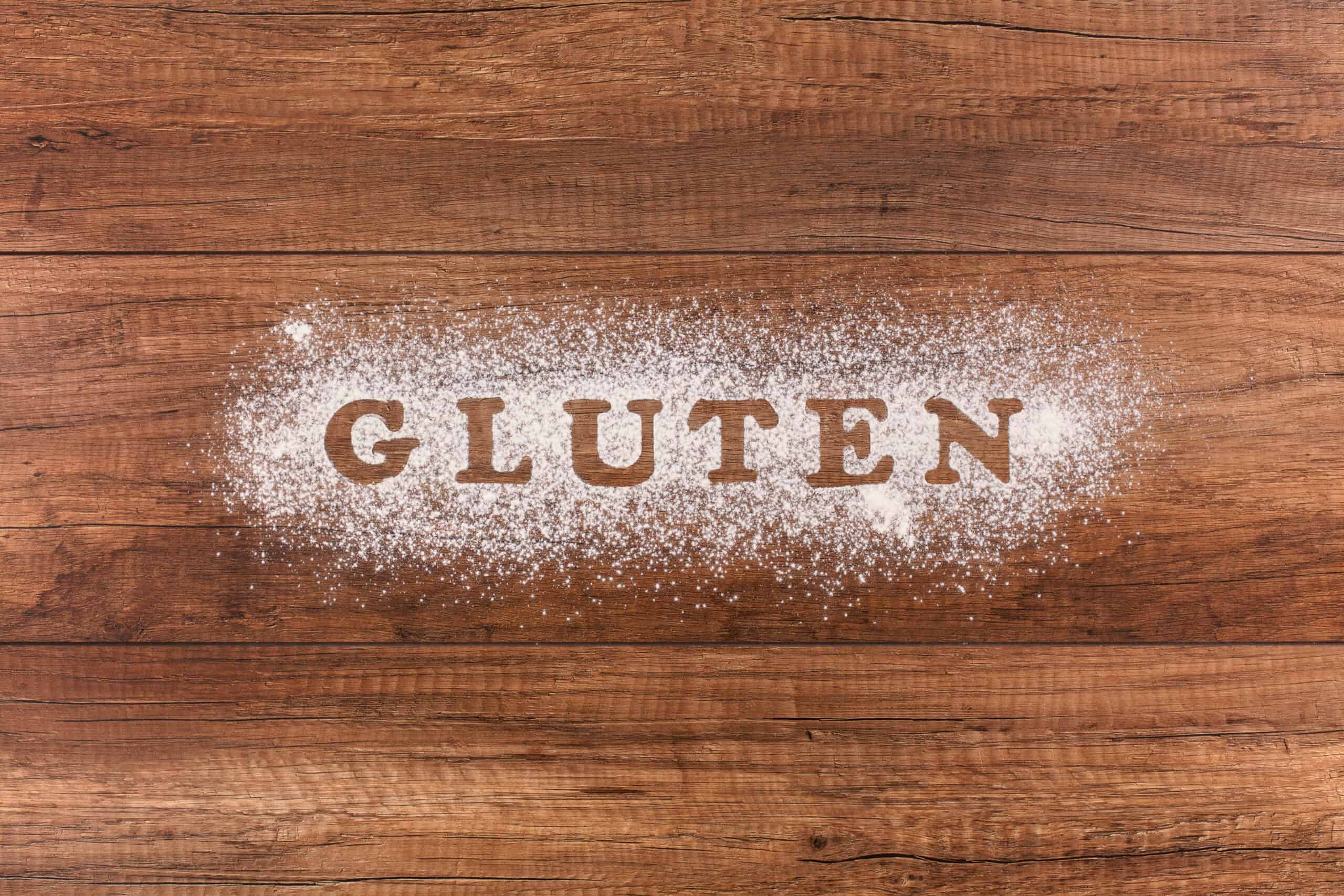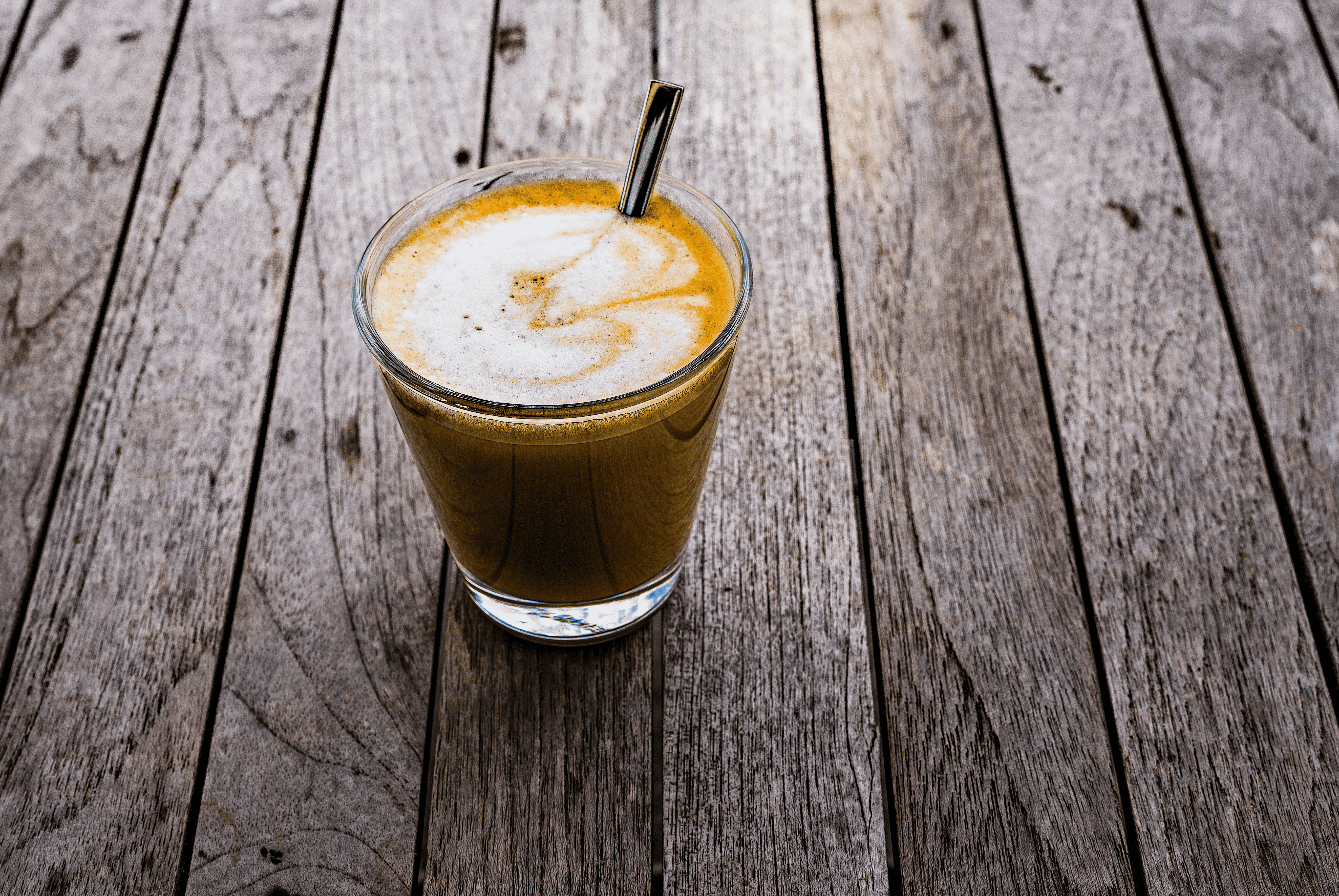When you don’t have time to make coffee from scratch (or nearly scratch) in the morning, you might opt for a faster solution like espresso powder or instant coffee. Between these two quick sources of coffee, which is better?
Both espresso powder and instant coffee have their pros and cons.
Espresso powder is regarded as having a stronger, richer flavor and a higher caffeine content when compared to Instant Coffee.
If you want to learn even more about espresso powder and instant coffee, you’ve come to the right place. In today’s guide, we’ll discuss the differences between these two powdered beverages as well as go over the pros and cons so you can choose which one to pour into your coffee cup!
What Is Instant Espresso Powder?
First, let’s talk about espresso powder.
Also referred to as instant espresso, espresso powder is pre-brewed espresso that undergoes dehydration. Rather than a liquid espresso, the dehydration process makes the espresso into a very fine powder instead.
The powder are sealed into packets and then shipped to grocery stores and cafés across the country. They’re quite concentrated!
How to Make Coffee Using Espresso Powder
To make coffee out of espresso powder, pour about a teaspoon of powder into your favorite mug.
Boil six to eight ounces of hot water (depending on how much your mug can hold) in a kettle and wait between 30-45 second to cool. Then pour it into the mug. This rehydrates the granules.
Related Reading: Why you Should Never Use Boiling Water for Your Coffee
You can also make instant espresso with cold water if you want iced espresso. We recommend adding the espresso powder first, then the cold water, and finally, the ice cubes.
Why? After pouring in the water, you have to stir the espresso powder, and ice cubes can get in the way of that.
Although the water should dissolve most of the espresso granules, causing their flavor to release on the way out, you still don’t want any clumps or lumps of espresso powder at the bottom of your mug. Stirring is the only way to prevent that.
When satisfied that you stirred sufficiently, take a sip of your espresso. You might decide to add more espresso powder, but don’t overdo it. Another teaspoon will do the trick, and you want to stir that just as well as the first teaspoon.
Espresso Powder and Caffeine Content
Espresso powder is very caffeinated, sometimes even more so than real espresso.
A 30-gram serving of espresso coffee contains 64 milligrams of caffeine, while a two-gram teaspoon serving of espresso powder has between 30 and 80 milligrams of caffeine.
That said, espresso powder is not as flavorful as the real deal, even if it is more caffeinated. You can make the flavor stronger by adding more espresso powder, but drinking instant espresso isn’t the same as drinking real espresso.
We recommend not using instant espresso powder to make an espresso shot as it isn’t going to taste the same as your typical shot of espresso.
What Is Instant Coffee? How Do You Make It?
The classic beverage of the two, instant coffee, is for those who want a steaming cup of coffee in the mornings but don’t have the time to grind and brew them.
Like instant espresso comes from real espresso, instant coffee is sourced from coffee beans. They are pre-brewed and then dehydrated via spray drying or a freeze-drying process.
Unlike espresso powder, instant coffee isn’t exclusively sold in granules. It’s sometimes also manufactured as solids as well as a concentrated liquid.
Depending on how you buy your instant coffee, its preparation methods vary.
If you like granulated instant coffee, then you’d prefer it the same way you would instant espresso per the instructions above.
Fill a coffee cup with a teaspoon or two of instant coffee powder. On your stovetop, boil 120 milliliters of hot water, then pour it straight into the cup (carefully, of course!).
As you did when making powdered espresso, you want to stir immediately until the instant coffee granules have fully dissolved.
Since your coffee is black, feel free to add cream, sugar, and milk if that’s how you take your coffee. Then take a sip and adjust the ingredients as needed until the coffee is to your liking. You can even add more instant coffee if you wish.
If you make instant coffee with cold water, you might add a couple of ice cubes to have iced coffee. Feel free to stir in milk, cream, or sugar if you’d prefer.
How do you prepare liquid coffee concentrate? You can microwave or heat the liquid coffee until it’s your preferred drinking temperature. Then stir in any sugar or milk and enjoy!
The Differences Between Espresso Powder and Instant Coffee
Now that you have a better grasp of what instant coffee and espresso powder are, let’s assess the differences between these two instant beverages.
Espresso Powder Is More Caffeinated
Instant espresso is insanely caffeinated, sometimes even more so than real espresso (that depends on the serving size of your shot, of course).
As we talked about earlier, powdered espresso contains anywhere from 30 to 80 milligrams of caffeine in a two-gram teaspoon. You’d be wired for hours after making a cup of instant espresso, that’s for sure!
A six-fluid-ounce serving of instant coffee contains 47 milligrams of caffeine by comparison. That’s plenty of caffeine, but it’s nowhere near as much as a cup of instant espresso.
Interestingly, a cup of non-instant coffee has the most caffeine, 95 milligrams in eight fluid ounces.
Too much caffeine can cause jitters, anxiety, and stomach issues, so it’s good not to overdo it!
Instant Coffee Comes in Other Forms Outside of Granules
Espresso powder, as the name implies, is a powdered product. You can only buy espresso granules, no other form of instant espresso.
Instant coffee is usually solid in granule form but not exclusively. For example, if you wanted a concentrated liquid coffee that you only have to reheat, you can buy that. That’s even more convenient than instant coffee!
Espresso Powder Uses Arabica Beans, Instant Coffee Robusta Beans
One of the reasons that instant espresso and instant coffee don’t taste identical is due to the coffee beans used to make each respective beverage.
For espresso powder, it’s Arabica beans, primarily from Latin America. Regarded as a more expensive coffee bean, Arabica beans take longer to produce and are more challenging to make due to the risk of pests.
Additionally, the Coffea arabica tree that produces Arabica beans makes fewer beans per tree than Robusta beans, further adding to the rarity and value of Arabica beans.
Robusta beans are more caffeinated than Arabica beans, but that leads to a flavor that’s often harsher and bitterer. You might also notice an aftertaste that’s like peanuts.
Grown throughout Indonesia and Africa, Robusta beans grow more plentifully since the trees are weather and pest-resistant (to a degree). Further, the trees that produce Robusta coffee beans have a higher yield than Arabica coffee beans trees.

Espresso Powder Pros and Cons
As promised, let’s now go over the pros and cons of both instant espresso and instant coffee. As we did earlier, we’ll begin by talking about espresso powder first.
Pros
- If you don’t have the time to make coffee in the morning and you want a jolt of caffeine, espresso powder is undoubtedly one way to ensure you’re caffeinated and raring to go.
- You don’t need an espresso machine to make instant espresso. It can be hard justifying buying a coffee machine just for espresso for apartment dwellers and people otherwise lacking a lot of countertop space. Now you won’t have to!
- Instant espresso has a strong flavor.
- You can drink espresso powder hot or cold.
- Espresso powder is generally low-cost, and a little goes a long way.
- You don’t only have to use instant espresso to make coffee. Try adding a pinch of the stuff when baking chocolatey desserts such as brownies or chocolate cakes. The depth of flavor will be out of this world!
Cons
- Since espresso powder is so very caffeinated, it’s not hard to overdo it on the powder and end up giving yourself the caffeine jitters.
- Instant espresso only comes in powdered form.
- You have to really stir the espresso powder into your hot or cold beverage, or you’ll end up with unpalatable clumps in your coffee.
- No matter how much powder you add, espresso powder does not have the same depth of flavor as real espresso.
Instant Coffee Pros and Cons
Now let’s switch gears and review the pros and cons of instant coffee.
Pros
- Unlike instant espresso, instant coffee isn’t only available in powdered form. You can also enjoy instant coffee as a concentrated liquid that you reheat.
- Instant coffee is fast and easy to make, taking only minutes. You can skip all the grinding and roasting of coffee beans and get right to the good stuff, which is drinking coffee when you use instant coffee.
- If you’re short on counter space and don’t have the room for a good coffeemaker, you can just make instant coffee instead.
- You can drink instant coffee, hot or cold, and it’s easy and quick to make either way.
- Instant coffee is usually cheaper than powdered espresso, and a little will still take you a long way.
- Instant coffee is less caffeinated than regular coffee, so you can control your caffeine intake better.
Cons
- Just as powdered espresso risks being too clumpy if you don’t stir it sufficiently, you face that same risk when making instant coffee. The exception is if you buy concentrated liquid coffee.
- Instant coffee is regarded as not tasting as pleasant as freshly brewed coffee. Although making instant coffee is cheaper, you might be better off going through your local café’s drive-thru and picking up a more flavorful cup.
- Instant coffee doesn’t contain the same level of antioxidants that a fresh-brewed cup of coffee does.
Espresso Powder vs. Instant Coffee – Which Is the Better Option?
Now it’s time to answer the question that we’re sure has been at the top of your mind as you read this article. Which is better, espresso powder or instant coffee?
If we’re talking about flavor, then it’s instant espresso all the way.
Now, before we discuss flavor, we must reiterate that both instant espresso and instant coffee are pale imitations of their true-brewed, authentic counterparts.
That said, since espresso is naturally more flavorful than coffee anyway, more of the flavor of espresso comes through in powdered espresso than coffee flavor does in instant coffee.
Part of that is about the coffee beans, as instant espresso uses Arabica beans, which are higher-quality than Robusta beans.
Espresso powder is also more caffeinated, and that matters too. No, not only for your coffee buzz but for flavor.
According to a Journal of Sensory Studies report, “Caffeine contributes to the flavor profiles of beverage and food products…Research has also indicated caffeine’s ability to enhance desirable tastes in beverages, such as sweetness and saltiness, by modifying neurological pathways.”
Even though instant espresso doesn’t have the richness and boldness of real espresso, it still tastes more flavorful than instant coffee because it’s a fair deal more caffeinated.
Bottom Line
Espresso powder and instant coffee are two of the most convenient products on store shelves when you want coffee now. All you have to do is boil or cool some water, stir the powder, and you’ll be sipping in minutes.
Instant espresso is the winner if you want the more flavorful beverage between the two for those mornings when you’re in a pinch. It’s made of higher-quality Arabica beans, has more caffeine for a tastier profile, and tastes bolder.
Neither instant coffee nor instant espresso taste as full-bodied as their non-instant counterparts and should thus only be drunk occasionally. You’re short-changing yourself to make a habit of drinking powdered espresso or instant coffee too often!
Can you Use Regular Coffee Beans to Make Espresso?
If you want to take your coffee skills to the next level and ditch the instant, then your first step is the purchase some quality coffee beans. You may wonder if regular coffee beans can be used to make espresso.
The answer would be yes. Espresso has two ingredients: water and coffee beans. If using regular beans, it’s best to use a dark roast to emulate the natural oils of espresso beans.
To read more, click here.
Is Coffee Gluten Free? Best Cup for Your Gut
Coffee, with its invigorating aroma and rich flavor, is a…
How to Make the Perfect Gibraltar Coffee
Gibraltar coffee is a delicious espresso-based drink that originated right…


